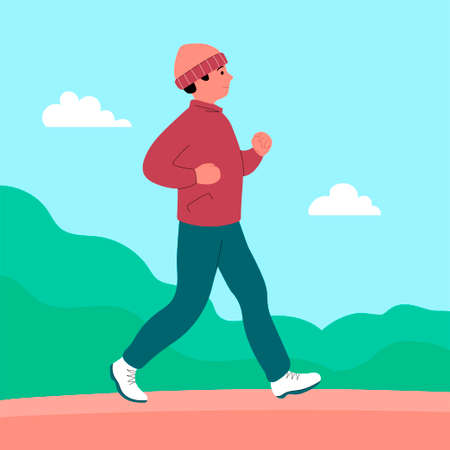Why Foam Rolling Matters for Hikers
Hiking isn’t your average walk in the park. Whether you’re grinding out miles on rocky switchbacks, powering up steep inclines, or navigating uneven terrain, your body takes a beating in ways city dwellers rarely experience. The unique physical demands of hiking—think constant elevation changes, repetitive foot strikes, and hours under load with a heavy pack—put serious stress on your muscles, fascia, and joints. This is where foam rolling becomes a game-changer for hikers looking to stay at the top of their trail game.
Foam rolling works as a form of self-myofascial release—a hands-on technique that targets tightness and knots in your muscle tissue. For hikers, this means you can actively prevent post-hike soreness (that dreaded next-day stiffness), reduce your risk of common injuries like IT band syndrome or shin splints, and keep your mobility dialed in for those long weekends in the wild. By incorporating foam rolling into your routine, you’re not just speeding up recovery; you’re actually upgrading your performance on the trail. The better your muscles move and recover, the farther—and happier—you’ll hike.
2. Foam Roller Basics: Gear Up for Success
If youre hitting the trails hard, a foam roller is your best ally for recovery and performance. But before you dive in, picking the right roller and learning safe technique is non-negotiable. Here’s how to set yourself up for success.
Choosing the Right Foam Roller: Essentials for Hikers
The markets flooded with options—long, short, smooth, textured. Not all foam rollers are created equal, especially when your quads and calves are paying the price after a steep climb. Use this quick guide to zero in on what works best for hikers:
| Roller Type | Best For | Pros | Cons |
|---|---|---|---|
| Smooth (Standard Density) | Beginners; general soreness | Gentle; less painful; easy to control | May not reach deep knots |
| Textured (Grid/Ridges) | Experienced users; deep tissue work | Targets trigger points; mimics massage | Can be intense or painful at first |
| Short/Travel-Size | On-the-go; ultralight packing | Portable; fits in most packs | Covers less surface area; limited versatility |
Pro Tip:
If you’re new to foam rolling, start with a standard-density smooth roller (18″-24″ length). Save the knobby ones for after youve built up tolerance.
Safety First: Do’s and Don’ts for Trail-Hardened Muscles
Foam rolling isn’t just about brute force. Get sloppy, and you could end up with bruising or injury—definitely not what you want before your next summit push. Here’s your no-nonsense checklist:
Do’s
- Start slow: Roll gently over muscles 1–2 minutes per area.
- Breathe: Exhale as you hit tight spots—don’t tense up.
- Avoid bony areas: Focus on muscle, not joints or spine.
Don’ts
- Never roll directly on knees, lower back, or neck.
- Avoid rolling over fresh injuries or bruises.
- Don’t rush—quick rolling won’t get results and can do more harm than good.
Nail these basics, and you’ll be ready to tackle the toughest terrain—and recover faster when you’re done.

3. Target Areas: Where Hikers Get Tight
When you’re pounding out miles on the trail, certain muscle groups work overtime—often leading to tightness that can wreck your mobility and set you up for injury. Let’s break down the main problem zones hikers need to focus on with foam rolling, and why these muscles are mission-critical for keeping you moving strong.
Calves: The Unsung Heroes
Your calves absorb shock every step you take, especially on uneven or rocky terrain. Tight calves can limit ankle mobility, making it harder to navigate steep climbs or descents and increasing your risk for strains or rolled ankles. Regularly rolling out your calves keeps them supple and ready for whatever the trail throws at you.
IT Bands: Side-Line Stabilizers
The iliotibial (IT) band runs along the outside of your thigh from your hip to your knee. Hikers often experience IT band tightness due to long periods of repetitive movement and constant stabilization over rough ground. If neglected, a tight IT band can lead to pain on the outside of your knee—a common complaint for trail junkies. Foam rolling helps release tension and keeps your stride smooth and pain-free.
Quads: Uphill Powerhouse
Your quadriceps do the heavy lifting on ascents and descents. When quads get tight, they pull on your kneecap and can throw off knee alignment, which is bad news for anyone logging serious elevation gain. Rolling out your quads reduces stiffness, improves blood flow, and helps maintain full range of motion in your knees.
Lower Back: Core Support Center
While not a muscle you directly roll out like the others, your lower back takes a beating from heavy packs and long days on the move. Tightness here can sap stability and lead to poor posture as you hike. By targeting surrounding areas—like glutes, hamstrings, and lats—with the foam roller, you relieve pressure on your lower back and keep your core engaged when it matters most.
The Bottom Line
Don’t let tight muscles be the weak link in your hiking game. Zeroing in on these common hot spots with smart foam rolling pays off big time in comfort, efficiency, and injury prevention—so you can crush more miles and enjoy every step of the journey.
4. Step-by-Step Foam Rolling Techniques
If youre a hiker dealing with muscle tightness or chasing better mobility, the right foam rolling protocol is your best friend. Below are no-nonsense, battle-tested instructions to help you target trouble spots and supercharge your recovery. These steps are designed for real-world results—no fluff, just what works on the trail.
Foam Rolling Basics: How to Get Started
- Choose Your Tool: Go with a high-density foam roller for deep tissue work. If you’re new, a softer roller can ease you in.
- Timing: For hikers, roll out post-hike or as part of your regular evening routine. Spend at least 1-2 minutes on each muscle group.
- Pain Scale: Aim for “uncomfortable but tolerable”—never pain that makes you wince or tense up.
Battle-Tested Rolling Techniques
| Muscle Group | Target Area | How-To | Pro Tips |
|---|---|---|---|
| Calves | Soleus & Gastrocnemius | Sit with legs extended, roller under calves. Lift hips, slowly roll from ankle to knee. Pause and hold on tight spots. | Add ankle circles when holding pressure for deeper release. |
| Quads | Front Thighs | Lying face down, roller under thighs. Use forearms to move body back and forth from hip to knee. | Bend knee as you roll to hit stubborn knots. |
| IT Band | Outer Thigh (Hip to Knee) | Lying on side, top leg crossed over for support. Roll from hip bone down toward the outside of the knee. | Focus more on glutes and outer quad if IT band is too painful. |
| Glutes & Piriformis | Buttocks/Upper Hip | Sit on roller, cross one ankle over opposite knee. Lean into the glute of crossed leg and roll small sections. | Use short rolls and adjust angle for maximum effect. |
| TFL & Hip Flexors | Front/Side Hips | Lying face down at an angle, place roller just below hip bone. Roll slowly toward mid-thigh. | Breathe deep and keep core engaged for stability. |
| Lats & Upper Back | Sides of Torso & Between Shoulder Blades | Lying on side/back, roller under armpit or upper back. Rock gently side-to-side or up-and-down. | Avoid rolling directly on the lower back spine; stick to muscle tissue only. |
Troubleshooting Tight Spots: Proven Methods
- Hold and Breathe: When you hit a “hot spot,” pause and take 5-10 slow breaths until discomfort eases up by 30% or more.
- Mash + Move: Add gentle movement (like flexing/extending a joint) while holding pressure to unlock stuck tissue faster.
The Full-Body Recovery Routine for Hikers
If time is short after a hike, focus on calves, quads, glutes, and lats. Hit each area for at least one minute per side—think of it as field maintenance for your body’s moving parts. Stick with this approach after long days on the trail or tough training sessions, and youll notice improved range of motion and faster recovery between hikes. Consistency is key; make foam rolling part of your hiking toolkit alongside water purification tablets and emergency snacks.
5. When and How Often Should You Foam Roll?
If you’re serious about keeping your body trail-ready, timing your foam rolling sessions is just as important as the technique itself. Here’s how to integrate foam rolling into your hiking prep and recovery routines for maximum results.
Pre-Hike Prep: Warming Up with Foam Rolling
Foam rolling before you hit the trail isn’t just about “loosening up”—it’s about priming your muscles for action. Spend 5–10 minutes targeting major muscle groups you’ll use while hiking: calves, quads, IT bands, glutes, and back. This increases blood flow, improves range of motion, and helps reduce the risk of injury. Focus on slow, controlled passes; don’t rush it. Pre-hike rolling should not be so aggressive that it causes soreness—think of it as activation, not punishment.
Post-Hike Recovery: Unwind and Repair
After a long day on the trail, your muscles are tight, fatigued, and full of metabolic waste. Now is the time for a more thorough session—aim for 10–20 minutes. Pay extra attention to any hotspots where you feel knots or trigger points. Don’t shy away from spending longer on trouble areas, but keep each muscle group under two minutes to avoid overdoing it. Pairing foam rolling with static stretching post-hike can further enhance flexibility and aid recovery.
How Often Is Enough?
Consistency is king when it comes to mobility work. For most hikers, foam rolling three to five times per week strikes a solid balance between effectiveness and sustainability. If you’re training hard or tackling high-mileage days, daily rolling—especially after hikes—can help stave off chronic tightness and overuse injuries.
Pro Tips for Building Your Routine
- Use pre-hike rolling to get your body ready and post-hike rolling to recover faster.
- If you’re short on time, prioritize areas that feel especially tight or sore.
- Keep breathing steady during each roll—don’t hold your breath when you hit a tender spot.
Bottom line: Make foam rolling a non-negotiable part of your hiking ritual. The more consistently you roll, the better your body will handle the rigors of the trail—and the less likely you’ll be sidelined by preventable aches and pains.
6. Foam Rolling Safety and Troubleshooting
Key Warning Signs: When to Back Off
If you’re hitting the trail every weekend, your foam roller can be your best friend—or your worst enemy if misused. First, know when to pump the brakes. Sharp or shooting pain, numbness, tingling, or bruising are all red flags. You should feel pressure and mild discomfort—not agony. If you experience swelling, persistent soreness after rolling, or any kind of joint pain, it’s time to stop and reassess your technique or consult a medical professional.
Common Mistakes Hikers Make with Foam Rolling
Rolling Directly on Painful Areas
One classic blunder is going straight for the sorest spot and camping there. This can actually irritate tissues further. Instead, start by rolling around the sensitive area to loosen up surrounding muscles before gently addressing the tight spot itself.
Rushing Through Your Routine
Another mistake: treating foam rolling like a race. Quick, jerky movements won’t give your muscles time to release tension and may cause microtrauma. Use slow, controlled passes—think 1 inch per second—to let your fascia relax.
Ignoring Proper Form and Alignment
Poor posture isn’t just a hiking issue—it translates directly to how you use your roller. Keep your core engaged and avoid collapsing your hips or arching your back excessively. Improper alignment can strain joints and defeat the purpose of recovery work.
Troubleshooting Advice: Stay on Track for Your Next Hike
If You Feel Sore After Rolling
Mild soreness is normal, especially if you’re new to foam rolling or worked out knots in neglected areas. But if soreness lingers past 24 hours, reduce the intensity next time and hydrate well post-session.
If You’re Not Seeing Results
If mobility doesn’t improve or tightness persists after regular rolling, reassess your technique: Are you covering all major muscle groups? Are you spending enough time (at least 1–2 minutes per muscle group)? Sometimes pairing foam rolling with dynamic stretching will help unlock stubborn tension.
If You Experience Numbness or Tingling
This could signal nerve impingement—shift your position immediately and avoid putting direct pressure on nerves (like the sciatic nerve behind your glutes). Never “push through” these sensations.
Bottom Line: Respect Recovery as Much as the Trail
Foam rolling is a powerful tool for hikers chasing bigger miles and better mobility. But like any tool, misuse can lead to setbacks instead of progress. Listen to your body’s signals, refine your technique, and treat recovery sessions with the same focus you bring to your adventures outdoors—so nothing keeps you off the trail longer than necessary.


